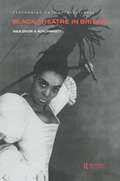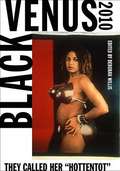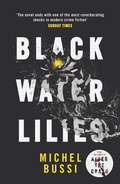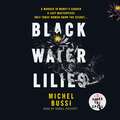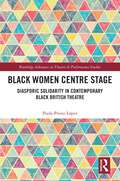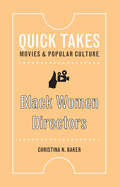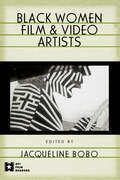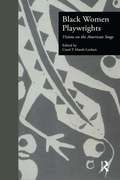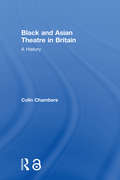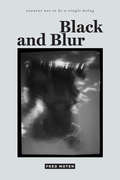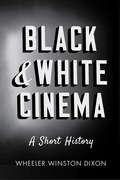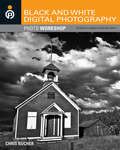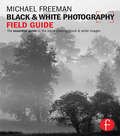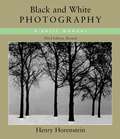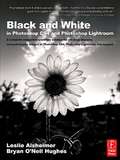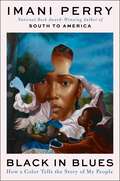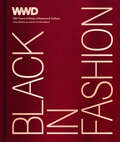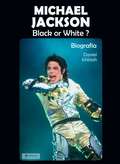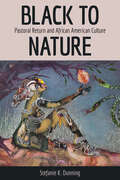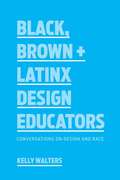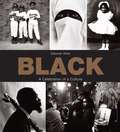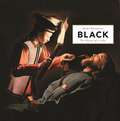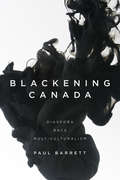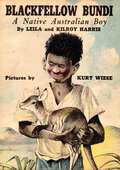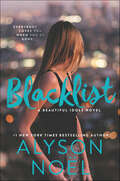- Table View
- List View
Black Theatre in Britain
by TompsettFirst Published in 1998. Routledge is an imprint of Taylor & Francis, an informa company.
Black Venus 2010: They Called Her "Hottentot"
by Deborah WillisAs a young South African woman of about twenty, Saartjie Baartman, the so-called “Hottentot Venus,” was brought to London and placed on exhibit in 1810. Clad in the Victorian equivalent of a body stocking, and paraded through the streets and on stage in a cage she became a human spectacle in London and Paris. Baartman’s distinctive physique became the object of ridicule, curiosity, scientific inquiry, and desire until and after her premature death. The figure of Sarah Baartman was reduced to her sexual parts. Black Venus 2010 traces Baartman’s memory in our collective histories, as well as her symbolic history in the construction and identity of black women as artists, performers, and icons. The wide-ranging essays, poems, and images in Black Venus 2010 represent some of the most compelling responses to Baartman. Each one grapples with the enduring legacy of this young African woman who forever remains a touchstone for black women. Contributors include: Elizabeth Alexander, Holly Bass, Petrushka A Bazin, William Jelani Cobb, Lisa Gail Collins, Renée Cox, J. Yolande Daniels, Carole Boyce Davies, Leon de Wailly, Manthia Diawara, Diana Ferrus, Cheryl Finley, Nikky Finney, Kianga K. Ford, Terri Francis, Sander Gilman, Renée Green, Joy Gregory, Lyle Ashton Harris, Michael D. Harris, Linda Susan Jackson, Kellie Jones, Roshini Kempadoo, Simone Leigh, Zine Magubane, E. Ethelbert Miller, Robin Mitchell, Charmaine Nelson, Tracey Rose, Radcliffe Roye, Bernadette Searle, Lorna Simpson, Debra S. Singer, Penny Siopis, Hank Willis Thomas, Kara Walker, Michele Wallace, Carla Williams, Carrie Mae Weems, J. T. Zealy, and the editor.
Black Water Lilies: 'A dazzling, unexpected and haunting masterpiece' Daily Mail
by Michel BussiTHE INTERNATIONAL BESTSELLER 'Ends with one of the most reverberating shocks in modern crime fiction' The Sunday Times 'A dazzling, unexpected and haunting masterpiece' Daily Mail 'A work of genius... Stunning' Daily Express Jérôme Morval has been found dead in the stream that runs through the gardens at Giverny, where Monet did his famous paintings. In Jérôme's pocket is a postcard of Monet's 'Water Lilies' with the words: Eleven years old. Happy Birthday.Entangled in the mystery are three women: a young painting prodigy, the seductive village schoolteacher and an old widow who watches over the village from a mill by the stream. All three of them share a secret. But what do they know about Jérôme's death? And what is the connection to the mysterious 'Black Water Lilies', a rumoured masterpiece by Monet that has never been found?MICHEL BUSSI: THE MASTER OF THE KILLER TWIST ''A novel so extraordinary that it reminded me of reading Stieg Larsson for the very first time' The Sunday Times on After the Crash'Inventive, original and incredibly entertaining' Sunday Mirror on Don't Let Go 'Combines an extraordinarily inventive plot with characters haunted by long-ago events - and demonstrates why he has such a hold on readers' The Times on Time Is A Killer
Black Water Lilies: 'A dazzling, unexpected and haunting masterpiece' Daily Mail
by Michel BussiGiverny. During the day, tourists flock to the former home of the famous artist Claude Monet and the gardens where he painted his Water Lilies. But when silence returns, there is a darker side to the peaceful French village.This is the story of thirteen days that begin with one murder and end with another. Jérôme Morval, a man whose passion for art was matched only by his passion for women, has been found dead in the stream that runs through the gardens. In his pocket is a postcard of Monet's Water Lilies with the words: Eleven years old. Happy Birthday.Entangled in the mystery are three women: a young painting prodigy, the seductive schoolteacher and an old widow who watches over the village from a mill by the stream. All three of them share a secret. But what do they know about the discovery of Jérôme Morval's corpse? And what is the connection to the mysterious, rumoured painting of Black Water Lilies?(p) 2016 Orion Publishing Group
Black Women Centre Stage: Diasporic Solidarity in Contemporary Black British Theatre (Routledge Advances in Theatre & Performance Studies)
by Paola Prieto LópezThis book examines the political alliances that are built across the diaspora in contemporary plays written by Black women playwrights in the UK. Through the concept of creative diasporic solidarity, it offers an innovative theoretical approach to examine the ways in which the playwrights respond creatively to the violence and marginalisation of Black communities, especially Black women. This study demonstrates that theatre can act as a productive space for the ethical encounter with the Other (understood in terms of alterity, as someone different from the self) by examining the possibilities of these plays to activate the spectators’ responsibility and solidarity towards different types of violence experienced by Black women, offering alternative modes of relationality. The book engages with a range of contemporary works written by Black women playwrights in the UK, including Mojisola Adebayo, Theresa Ikoko, Diana Nneka Atuona, Gloria Williams, Charlene James, or Yusra Warsama, bringing to the fore a gendered and intersectional approach to the analysis of the texts. This book will be of great interest to students and scholars in contemporary theatre, gender studies and diaspora studies.
Black Women Directors (Quick Takes: Movies and Popular Culture)
by Christina N. BakerBlack women have long recognized the power of film for storytelling. For far too long, however, the cultural and historical narratives about film have not accounted for the contributions of Black women directors. This book remedies this omission by highlighting the trajectory of the culturally significant work of Black women directors in the United States, from the under-examined pioneers of the silent era, to the documentarians who sought to highlight the voices and struggles of Black women, and the contemporary Black women directors in Hollywood. Applying a Black feminist perspective, this book examines the ways that Black women filmmakers have made a way for themselves and their work by resisting the dominant cultural expectations for Black women and for the medium of film, as a whole.
Black Women Film and Video Artists (AFI Film Readers)
by Jacqueline BoboFirst published in 1998. Routledge is an imprint of Taylor & Francis, an informa company.
Black Women Playwrights: Visions on the American Stage (Studies in Modern Drama #Vol. 11)
by Carol P. Marsh-LockettFirst published in 1999. Routledge is an imprint of Taylor & Francis, an informa company.
Black and Asian Theatre In Britain: A History
by Colin ChambersBlack and Asian Theatre in Britain is an unprecedented study tracing the history of ‘the Other’ through the ages in British theatre. The diverse and often contradictory aspects of this history are expertly drawn together to provide a detailed background to the work of African, Asian, and Caribbean diasporic companies and practitioners. Colin Chambers examines early forms of blackface and other representations in the sixteenth century, through to the emergence of black and Asian actors, companies, and theatre groups in their own right. Thorough analysis uncovers how they led to a flourishing of black and Asian voices in theatre at the turn of the twenty-first century. Figures and companies studied include: Ira Aldridge Henry Francis Downing Paul Robeson Errol John Mustapha Matura Dark and Light Theatre The Keskidee Centre Indian Art and Dramatic Society Temba Edric and Pearl Connor Tara Arts Yvonne Brewster Tamasha Talawa. Black and Asian Theatre in Britain is an enlightening and immensely readable resource and represents a major new study of theatre history and British history as a whole.
Black and Blur
by Fred Moten"Taken as a trilogy, consent not to be a single being is a monumental accomplishment: a brilliant theoretical intervention that might be best described as a powerful case for blackness as a category of analysis."—Brent Hayes Edwards, author of Epistrophies: Jazz and the Literary Imagination In Black and Blur—the first volume in his sublime and compelling trilogy consent not to be a single being—Fred Moten engages in a capacious consideration of the place and force of blackness in African diaspora arts, politics, and life. In these interrelated essays, Moten attends to entanglement, the blurring of borders, and other practices that trouble notions of self-determination and sovereignty within political and aesthetic realms. Black and Blur is marked by unlikely juxtapositions: Althusser informs analyses of rappers Pras and Ol' Dirty Bastard; Shakespeare encounters Stokely Carmichael; thinkers like Kant, Adorno, and José Esteban Muñoz and artists and musicians including Thornton Dial and Cecil Taylor play off each other. Moten holds that blackness encompasses a range of social, aesthetic, and theoretical insurgencies that respond to a shared modernity founded upon the sociological catastrophe of the transatlantic slave trade and settler colonialism. In so doing, he unsettles normative ways of reading, hearing, and seeing, thereby reordering the senses to create new means of knowing.
Black and White Cinema
by Wheeler Winston DixonFrom the glossy monochrome of the classic Hollywood romance, to the gritty greyscale of the gangster picture, to film noir's moody interplay of light and shadow, black-and-white cinematography has been used to create a remarkably wide array of tones. Yet today, with black-and-white film stock nearly impossible to find, these cinematographic techniques are virtually extinct, and filmgoers' appreciation of them is similarly waning. Black and White Cinema is the first study to consider the use of black-and-white as an art form in its own right, providing a comprehensive and global overview of the era when it flourished, from the 1900s to the 1960s. Acclaimed film scholar Wheeler Winston Dixon introduces us to the masters of this art, discussing the signature styles and technical innovations of award-winning cinematographers like James Wong Howe, Gregg Toland, Freddie Francis, and Sven Nykvist. Giving us a unique glimpse behind the scenes, Dixon also reveals the creative teams--from lighting technicians to matte painters--whose work profoundly shaped the look of black-and-white cinema. More than just a study of film history, this book is a rallying cry, meant to inspire a love for the artistry of black-and-white film, so that we might work to preserve this important part of our cinematic heritage. Lavishly illustrated with more than forty on-the-set stills, Black and White Cinema provides a vivid and illuminating look at a creatively vital era.
Black and White Digital Photography Photo Workshop
by Chris BucherHow to create stunning black and white photos in a digital format Shooting pictures in black and white presents unique challenges for beginners and experienced digital photographers alike. A strong understanding of photography's fundamentals is crucial to capturing great black and white images, and factors such as contrast and lighting are much more integral to black and white photography than to color. Black and White Digital Photography Photo Workshop teaches digital photographers the skills they need to master black and white photography. Focuses on the rules of photography and how they apply differently to black and white photography Offers guidance for properly uploading digital images to a computer Explains insider tips and tricks for using Photoshop and Lightroom to successfully enhance black and white images Black and white photography presents different challenges than color photography. In Black and White Digital Photography Photo Workshop, photographers learn how to identify great opportunities for black and white photographs and how to turn those opportunities into stunning monochrome images they can be proud to display.
Black and White Photography Field Guide: The essential guide to the art of creating black & white images (The Field Guide Series)
by Michael FreemanIn this pocket-sized, portable guide, renowned photographer Michael Freeman addresses one of photography's most popular--and challenging--areas: black and white. With advice on lighting, shooting, conversion, and post-production, this is know-how that no photographer can afford to be without. Perfect for the digital photographer who wants to shoot and process RAW files as black and whie images.
Black and White Photography: A Basic Manual
by Henry HorensteinBLACK WHITE PHOTOGRAPHY is a comprehensive instructional book that covers every element of photography. Henry Horenstein's books have been widely used at leading universities, including Parsons School of Design, Harvard, Yale, Princeton, and MIT as well as in continuing education programs. Horenstein is a professor at the Rhode Island School of Design. BLACK WHITE PHOTOGRAPHY is a real bargain among photographic how-to books.
Black and White in Photoshop CS4 and Photoshop Lightroom: A complete integrated workflow solution for creating stunning monochromatic images in Photoshop CS4, Photoshop Lightroom, and beyond
by Leslie Alsheimer Bryan O'Neil HughesIn the highly anticipated second edition of this groundbreaking book, NAPP GURU award recipient and professional photographer Leslie Alsheimer and Adobe's own Bryan O'Neil Hughes show you everything you need to know to uncover the secrets to successful black and white conversion and printmaking. This comprehensive reference will help you maximize your workflow with coverage of all of the relevant new features of Photoshop CS4 and Lightroom 2, including every stage of the black and white process from capture to printing. Along the way, you'll find in-depth explanations of key topics such as color management, optimizing your workspace, softproofing and calibration (both onscreen and for output), evaluating histograms, non-destructive editing, and much more. New features in this edition include:.In-depth coverage of workflow using the Bridge and Adobe Camera RAW components of CS4.New recipes and tips for advanced black and white conversion .Coverage of Lightroom and Photoshop integration features.An overview of scanners and scanning your black and white film.Advice on exposure essentials and how to apply the Zone System to your digital shooting .A brand new chapter on black and white and creative image editing in LightroomBreathtaking color and black and white photographs, including Leslie Alsheimer's image which won the coveted Vincent Versace award at Photoshop World in 2008, will inspire you to expand your own creativity to limitless possibilities. This is the essential resource for any photographer shooting black and white in the digital age.
Black in Blues: How a Color Tells the Story of My People
by Imani PerryNAMED A MOST ANTICIPATED BOOK BY: Time, USA Today, People, AARP, Harper's Bazaar, Today.com, BookRiot, Bustle, LitHub, BookPage, The Millions, Ms., Our Culture, Electric Literature, W, and VultureA surprising and beautiful meditation on the color blue—and its fascinating role in Black history and culture—from National Book Award winner Imani PerryThroughout history, the concept of Blackness has been remarkably intertwined with another color: blue. In daily life, it is evoked in countless ways. Blue skies and blue water offer hope for that which lies beyond the current conditions. But blue is also the color of deep melancholy and heartache, echoing Louis Armstrong’s question, “What did I do to be so Black and blue?” In this book, celebrated author Imani Perry uses the world’s favorite color as a springboard for a riveting emotional, cultural, and spiritual journey—an examination of race and Blackness that transcends politics or ideology.Perry traces both blue and Blackness from their earliest roots to their many embodiments of contemporary culture, drawing deeply from her own life as well as art and history: The dyed indigo cloths of West Africa that were traded for human life in the 16th century. The mixture of awe and aversion in the old-fashioned characterization of dark-skinned people as “Blue Black.” The fundamentally American art form of blues music, sitting at the crossroads of pain and pleasure. The blue flowers Perry plants to honor a loved one gone too soon.Poignant, spellbinding, and utterly original, Black in Blues is a brilliant new work that could only have come from the mind of one of our greatest writers and thinkers. Attuned to the harrowing and the sublime aspects of the human experience, it is every bit as vivid, rich, and striking as blue itself.
Black in Fashion: 100 Years of Style, Influence & Culture
by WWD Tonya Blazio-Licorish Tara DonaldsonA stunning and comprehensive look at the indelible contribution of Black designers, models, scene-makers, and stylists to fashion history, from &“the bible of fashion&”—WWD.Black in Fashion is a celebration of Black voices in fashion as captured by Women&’s Wear Daily contributors and photographers since the publication&’s inception in 1910. WWD is showcased here with more than 375 black-and-white and color photographs, illustrations, and articles from its massive archive. The book, written by Tonya Blazio-Licorish and Tara Donaldson, explores the contributions of trailblazing designers like Stephen Burrows and Virgil Abloh, whose philosophy inspired a new generation to interact with fashion differently; pioneering models like Naomi Sims, who in 1969 at age twenty-one launched Naomi Inc., a cosmetics company catering to Black women; and celebrities and multi-hyphenates like Josephine Baker, whose approach to fashion in the 1920s single-handedly changed and challenged the influence of Black culture on a global scale. In-depth profiles on Black creatives throughout the fashion world—and on key topics such as the Black is Beautiful movement—punctuate the lavish pages as well, in addition to original interviews with notables and a foreword from acclaimed American designer Tracy Reese. Black in Fashion is an incomparable celebration of Black fashion from the ultimate voice of authority.Curated from the expansive archives of the legendary WWD, this visually stunning and groundbreaking work unveils the remarkable legacy of Black trailblazers whose style and vision have left an indelible mark on the fashion industry.Perfect for those looking for fashion books, fashion coffee table books, or Black history books, Black in Fashion is a must-have for fashion and history enthusiasts alike.
Black or White: Biografia di Michael Jackson
by Daniel IchbiahFra tutte le star apparse durante diversi decenni, Michael Jackson resta la più affascinante, quella che sfugge di più all'analisi immediata. Pieno di talento, capace di mettere in scena spettacoli di rara qualità, di scrivere canzoni indimenticabili, di muovere il suo corpo in modo sbalorditivo, Michael Jackson ha sedotto il pubblico innanzitutto per le sue qualità artistiche. Come contropartita, il pubblico ha dovuto accettare le eccentricità fuori dal normale di un personaggio mai classificabile, una specie di eccentrico eroe di una favola che avrebbe deragliato lungo la strada. Resta il fatto che la Storia ricorderà l'essenziale : « Billy Jean », « Thriller », « Don’t stop til you get enough » e altre canzoni diventate dei classici e destinate a resistere all'usura del tempo… Come ha dichiarato un altro maestro della sua arte, Steven Spielberg : « Così come non avremo mai più altri Fred Astaire o altri Chuck Berry o altri Elvis Presley, non ci sarà mai più nessuno paragonabile a Michael Jackson. ». « Il suo talento, la sua vivacità e il suo lato misterioso fanno di lui una leggenda... ». Questo libro racconta la vita di Michael, si sofferma in modo approfondito sugli episodi più rilevanti della sua esistenza e descrive l'evoluzione del cantante. Parla del "dietro le quinte" di Thriller, l'album di tutti i records. Contiene anche dei ritratti di Quincy Jones, Janet Jackson e La Toya. Per quale motivo un genio della pop music si è trasformato in un personaggio enigmatico, alla ricerca di un'identità parallela?
Black to Nature: Pastoral Return and African American Culture
by Stefanie K. DunningIn Black to Nature: Pastoral Return and African American Culture, author Stefanie K. Dunning considers both popular and literary texts that range from Beyoncé’s Lemonade to Jesmyn Ward’s Salvage the Bones. These key works restage Black women in relation to nature. Dunning argues that depictions of protagonists who return to pastoral settings contest the violent and racist history that incentivized Black disavowal of the natural world. Dunning offers an original theoretical paradigm for thinking through race and nature by showing that diverse constructions of nature in these texts are deployed as a means of rescrambling the teleology of the Western progress narrative. In a series of fascinating close readings of contemporary Black texts, she reveals how a range of artists evoke nature to suggest that interbeing with nature signals a call for what Jared Sexton calls “the dream of Black Studies”—abolition. Black to Nature thus offers nuanced readings that advance an emerging body of critical and creative work at the nexus of Blackness, gender, and nature. Written in a clear, approachable, and multilayered style that aims to be as poignant as nature itself, the volume offers a unique combination of theoretical breadth, narrative beauty, and broader perspective that suggests it will be a foundational text in a new critical turn towards framing nature within a cultural studies context.
Black, Brown + Latinx Design Educators: Conversations on Design and Race
by Kelly WaltersIn Black, Brown + Latinx Design Educators, Kelly Walters collects twelve deeply personal interviews with graphic design educators of color who teach at colleges and universities across the United States and Canada. The book centers the unique narratives of Black, Brown, and Latinx design educators, from their childhood experiences to their navigation of undergraduate and graduate studies and their career paths in academia and practice. The interviewees represent a cross-section of ethnic and multiracial backgrounds—African American, Jamaican, Indian, Pakistani, Puerto Rican, Dominican, Mexican, and Brazilian. Their impactful stories offer invaluable perspectives for students and emerging designers of color, creating an entry point to address the complexities of race in design and bring to light the challenges of teaching graphic design at different types of public and private institutions. Interwoven throughout the book are images that maintain cultural significance, from family heirlooms to design works that highlight aspects of their cultural identities. Readers will gain insight into the multitude of experiences of Black, Brown, and Latinx design educators who teach and work in the field today.
Black: A Celebration of a Culture (Nyu Series In Social And Cultural Analysis Ser. #11)
by Deborah WillisTucked away in the dusty halls of the Smithsonian archives and nearly forgotten by most historians, black culture is a vast, complex, interconnected web of different people, trends, and lifestyles. Although absent from our collective memory, Deborah Willis has dug through the archives and hunted down the remnants that tell the wonderful and tragic history of a people. Tackling all subjects with bravery and frankness, Deborah Willis's work is a true treasure to behold.Black, A Celebration of a Culture, presents the vibrant panorama of 20th-century black culture in America and around the world. The photos tell one story that resonates throughout the world. Broken up into segments that examine in detail such subjects as children, work, art, beauty, Saturday night and Sunday morning, the photos detail the history and the evolution of a culture. Each photograph, hand-picked by Deborah Willis, America's leading historian of African-American photography, celebrates the world of music, art, fashion, sports, family, worship or play. With over 500 photographs from every time period from the birth of photography to the birth of hip hop, this book is a truly joyous exhibition of black culture. From Jessie Owens to Barry Bonds, Ella Fitzgerald to Halle Berry, Black: A Celebration of a Culture is joyous and inspiring.
Black: The History of a Color
by Michel PastoureauThe story of the color black in art, fashion, and culture—from the beginning of history to the twenty-first centuryBlack—favorite color of priests and penitents, artists and ascetics, fashion designers and fascists—has always stood for powerfully opposed ideas: authority and humility, sin and holiness, rebellion and conformity, wealth and poverty, good and bad. In this beautiful and richly illustrated book, the acclaimed author of Blue now tells the fascinating social history of the color black in Europe.In the beginning was black, Michel Pastoureau tells us. The archetypal color of darkness and death, black was associated in the early Christian period with hell and the devil but also with monastic virtue. In the medieval era, black became the habit of courtiers and a hallmark of royal luxury. Black took on new meanings for early modern Europeans as they began to print words and images in black and white, and to absorb Isaac Newton's announcement that black was no color after all. During the romantic period, black was melancholy's friend, while in the twentieth century black (and white) came to dominate art, print, photography, and film, and was finally restored to the status of a true color.For Pastoureau, the history of any color must be a social history first because it is societies that give colors everything from their changing names to their changing meanings—and black is exemplary in this regard. In dyes, fabrics, and clothing, and in painting and other art works, black has always been a forceful—and ambivalent—shaper of social, symbolic, and ideological meaning in European societies.With its striking design and compelling text, Black will delight anyone who is interested in the history of fashion, art, media, or design.
Blackening Canada
by Paul BarrettFocusing on the work of black, diasporic writers in Canada, particularly Dionne Brand, Austin Clarke, and Tessa McWatt, Blackening Canada investigates the manner in which literature can transform conceptions of nation and diaspora. Through a consideration of literary representation, public discourse, and the language of political protest, Paul Barrett argues that Canadian multiculturalism uniquely enables black diasporic writers to transform national literature and identity. These writers seize upon the ambiguities and tensions within Canadian discourses of nation to rewrite the nation from a black, diasporic perspective, converting exclusion from the national discourse into the impetus for their creative endeavours.Within this context, Barrett suggests, debates over who counts as Canadian, the limits of tolerance, and the breaking points of Canadian multiculturalism serve not as signs of multiculturalism's failure but as proof of both its vitality and of the unique challenges that black writing in Canada poses to multicultural politics and the nation itself.
Blackfellow Bundi: A Native Australian Boy
by Leila Gott Harris Kilroy HarrisLeila Gott Harris’s Blackfellow Bundi: A Native Australian Boy offers a tender and insightful portrayal of the life and experiences of Bundi, a young Aboriginal boy navigating the challenges and joys of his cultural heritage in the Australian bush. Written with empathy and vivid detail, the book brings to life the traditions, struggles, and resilience of Indigenous Australians in a rapidly changing world.Through Bundi’s eyes, readers are introduced to the beauty of the land, the deep connection of his people to their environment, and the wisdom passed down through generations. Harris explores themes of identity, community, and belonging, as Bundi learns about his culture and navigates the complexities of interactions with settlers and the encroaching modern world.Rich with evocative descriptions and heartfelt moments, Blackfellow Bundi captures the spirit of a boy growing up in a time of cultural collision, where the preservation of heritage stands alongside the pressures of change. Harris weaves a narrative that is both educational and moving, offering readers a glimpse into the unique perspectives and challenges faced by Aboriginal communities.This book is not only a coming-of-age story but also a celebration of Indigenous traditions, highlighting the importance of understanding and respecting diverse cultures. Perfect for readers of all ages, Blackfellow Bundi invites reflection on the shared humanity that transcends cultural divides while honoring the richness of Australia’s First Peoples.
Blacklist (Beautiful Idols #2)
by Alyson NoelFans of Pretty Little Liars will crave the mystery and suspense in the second book of #1 New York Times bestselling author Alyson Noël’s Beautiful Idols series, where celebrity worship is a dangerous game.Wannabe reporter LAYLA, aspiring actress ASTER, and fledgling musician TOMMY joined the Unrivaled nightclub competition for the same reason—they knew winning it would change their lives. They just never imagined that somewhere along the way they’d become entangled in the disappearance of mega starlet MADISON BROOKS. Now each of them is smack in the center of a media frenzy that threatens to take all of them down.Banding together to clear their names, the fierce adversaries become temporary allies and vow to dig up the truth. But when Layla, Aster, and Tommy team up with an unsuspecting insider, they will find that some secrets are best kept in the grave.
